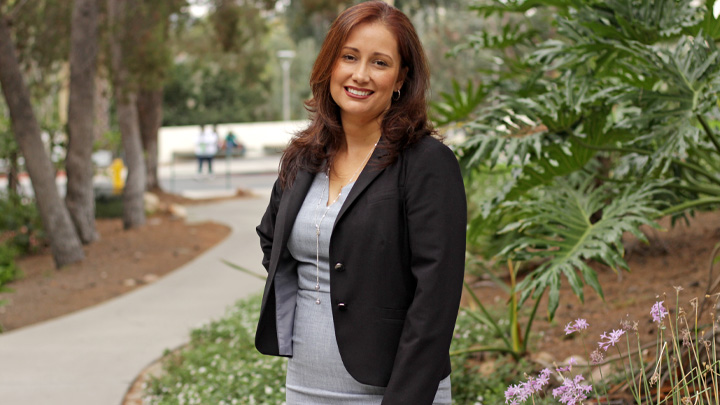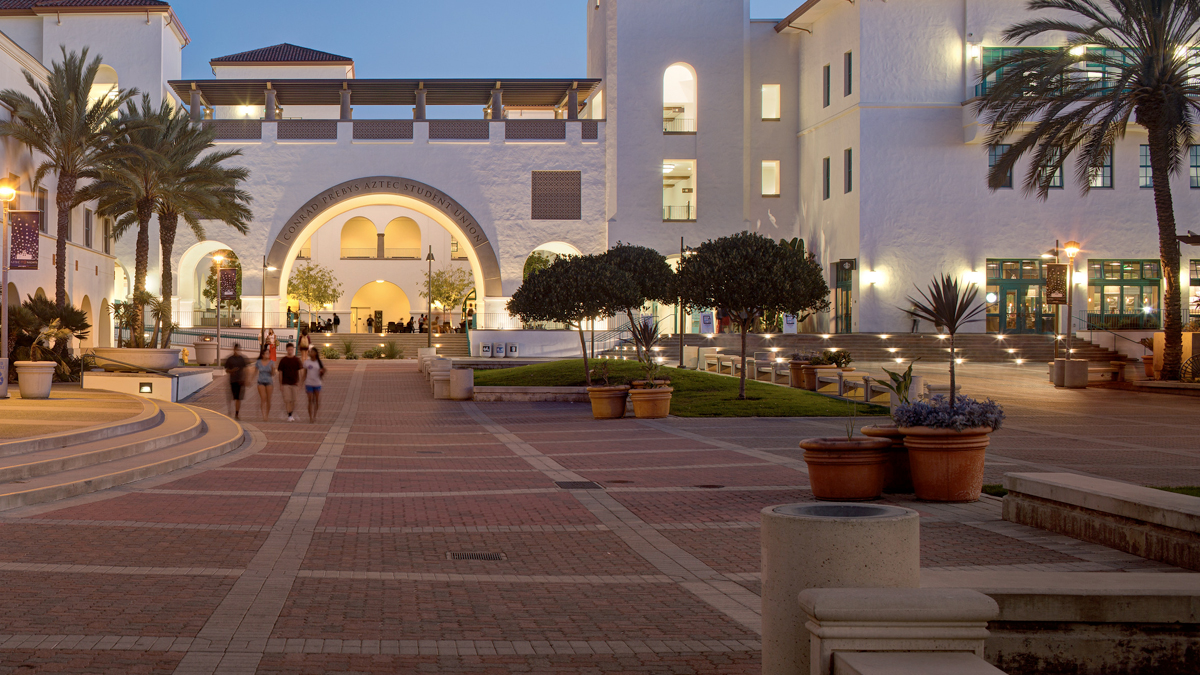A Q&A With New DLE Chair Sera Hernández

Sera Hernández remembers the relief she felt when she passed the language proficiency exam, making her dream of becoming a bilingual educator a reality.
“I barely passed,” she points out.
For Hernández, who grew up in the San Gabriel Valley east of Los Angeles, it was her Spanish that was the stumbling block. The daughter of a Mexican-American father and French-Canadian and Irish-American mother was never taught either of her heritage languages as a child, the result of two generations of language loss perpetrated by educational policy and societal pressures.
It instilled her with a desire to reclaim a missing piece of herself.
“We lost languages and cultural practices on both sides of my family, so I know how that impacts the way you show up in the world,” she says. “At the time, I really didn’t understand the socio-political context of bilingual education or of language loss. But it instilled this commitment in me to really explore language.”
That commitment has led her to where she is now: The new chair of the San Diego State University Department of Dual Language and English Learner Education (DLE).
Founded in 1978 as the Multicultural Department, DLE has survived decades of tumult and turmoil caused by state bilingual education policy to become California’s largest producer of bilingual educators, and a fore-runner in addressing the needs of linguistically- and ethnically-diverse learners.
Hernández has seen bilingual education from all angles. She spent a decade teaching in elementary school classrooms with bilingual learners across the state. Since joining the DLE faculty in 2015, her research has explored educational linguistics, language policy, bilingual teacher preparation and bilingualism and biliteracy practices.
We asked Hernández about her background, the state of bilingual education today and her thoughts on taking over the venerable DLE department.
What led you to make the jump from teaching elementary school to academia?
“After Prop 227 (a 1998 proposition that banned bilingual education in California) the state provided funding to teach ESL classes to parents. The idea was that rather than preserve a home language, we were going to completely change the homes — get parents speaking English as soon as possible, as well as their children. I was a part of those programs. It was problematic because we were institutionalizing English-only at all levels. Home language was not being seen as an asset, but as an obstacle that needed to be overcome.
“But in that work, I got to work alongside first-generation immigrant families and find out from them what their concerns were and how they wanted to support their children. I decided I wanted to do something in teacher preparation and to help drive policy-level change. That became my goal.”
How do you assess the change that has occurred for linguistically-diverse students and families since the repeal of Prop 227 in 2016?
“While we’re currently in a progressive policy era since the passage of Prop 58, we’re still seeing some of the same inequities perpetuated. Now bilingualism and multilingualism are considered sexy or cool, which actually pains me. We don’t have that consciousness at a national level of why it’s important to preserve home languages.
“A lot of what’s happening now is what’s often called the gentrification of dual-language education. Bilingual education has been commodified into something that serves more and more privileged families — like my own, I have to own my own middle class status and privilege here. Ideally, these programs should be designed to serve our most vulnerable multilingual learners.”
How does DLE help push back against this commodification?
“One major way is that we prepare dual language and bilingual teachers to acknowledge the socio-political and historical context. They don’t leave our program believing that we’re good to go and justice has been addressed. Just because you speak Spanish doesn’t mean you are immune to doing harm to students, especially if you are a multilingual learner yourself and you’ve gone through a system that hasn’t fully seen and heard you. You need that perspective to know what you’re getting into and to be an advocate for all students, and especially our multilingual learners.
“I think what’s beautiful about DLE is that, throughout our 45-year history, we have really prepared teachers for what is possible in the classroom. We want to see schools with strong dual language programs, a commitment to social justice and a commitment to making sure our most vulnerable students have access to what they need to be whole.”
There’s a controversy in your field about the term English Language Learners (ELs). Can you explain that?
“English Language Learners" is a policy label, and it’s not our preferred label despite it being in the name of our department. We prefer ‘multilingual learners,’ or some people say ‘emergent bilinguals.’ People get reduced to labels all the time. The term English Learner doesn’t recognize that they already have a linguistic repertoire of skills that they can use in their educational experience, if leveraged.”
What are your thoughts on taking over as chair of DLE?
“It’s a great honor and privilege to continue with this legacy, and I acknowledge the shoulders that I’m standing on. I love that DLE has been able to endure and sustain itself and thrive through many policy changes, through personnel changes, through other challenges. It was amazing, under Margarita Machado-Casas’ leadership, that we were able to grow in a pandemic.
“I love the collective consciousness of the department. I regularly have mentorship meetings with former DLE leaders and I am grateful that they are still connected to us, whether it’s Alberto Ochoa, Cristina Alfaro or Karen Cadiero-Kaplan. Dr. Ochoa — we call him the padrino, the godfather of the department — has even volunteered to come into the office every Tuesday to meet with prospective students.
“One of my goals is to bring us back into the office to rebuild morale after the pandemic. That’s not just on-campus classes, but actually having people in our space regularly. I want everyone to know that there’s a community of people waiting for you in our office.”

